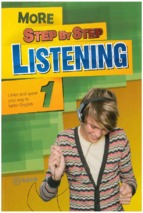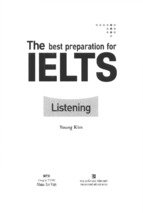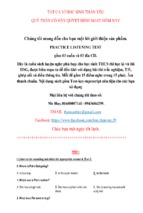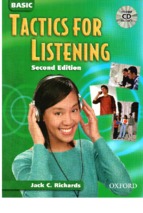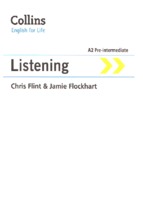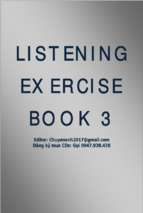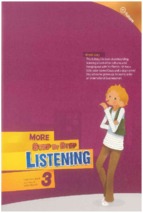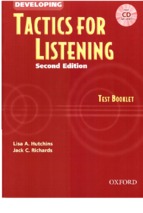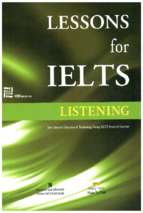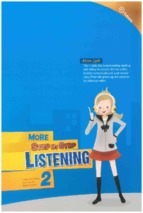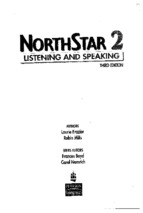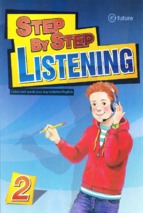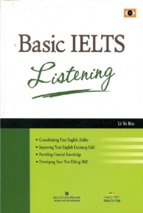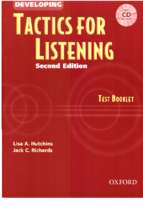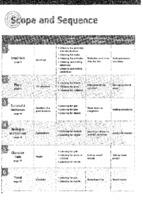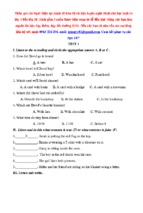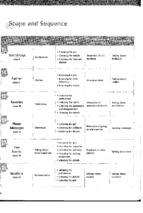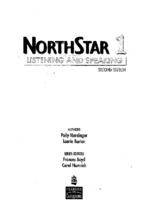Simpo PDF Merge and Split Unregistered Version - http://www.sim
-ICHIGAN�-ERIT�#URRICULUM
-ICHIGAN�-ERIT�#URRICULUM
Course/Credit Requirements
-ICHIGAN�-ERIT�#URRICULUM
ENGLISH LANGUAGE ARTS • Grade 11
1 Credit
Simpo PDF Merge and Split Unregistered Version - http://www.sim
Michigan State Board of Education
Kathleen N. Straus, President
Bloomfield Township
John C. Austin, Vice President
Ann Arbor
Carolyn L. Curtin, Secretary
Evart
Marianne Yared McGuire, Treasurer
Detroit
Nancy Danhof, NASBE Delegate
East Lansing
Elizabeth W. Bauer
Birmingham
Reginald M. Turner
Detroit
Eileen Lappin Weiser
Ann Arbor
Governor Jennifer M. Granholm
Ex Officio
Michael P. Flanagan, Chairman
Superintendent of Public Instruction
Ex Officio
MDE Staff
Jeremy M. Hughes, Ph.D.
Deputy Superintendent/Chief Academic Officer
Dr. Yvonne Caamal Canul, Director
Office of School Improvement
Welcome
Simpo
PDF Merge and Split Unregistered Version - http://www.sim
This guide was developed to assist teachers in successfully
implementing the Michigan Merit Curriculum. The identified content
expectations and guidelines provide a useful framework for designing
curriculum, assessments and relevant learning experiences for students.
Through the collaborative efforts of Governor Jennifer M. Granholm,
the State Board of Education, and the State Legislature, these landmark
state graduation requirements are being implemented to give Michigan
students the knowledge and skills to succeed in the 21st Century and
drive Michigan’s economic success in the global economy. Working
together, teachers can explore varied pathways to help students
demonstrate proficiency in meeting the content expectations and
guidelines. This guide should be used in conjunction with the High
School Content Expectations document for the discipline.
Curriculum Unit Design
One of the ultimate goals of teaching is for students to acquire
transferable knowledge. To accomplish this, learning needs to
result in a deep understanding of content and mastery level of skills.
As educational designers, teachers must use both the art and the
science of teaching. In planning coherent, rigorous instructional units
of study, it is best to begin with the end in mind.
Engaging and effective units include
•
•
•
•
•
•
•
•
•
•
•
•
•
•
•
appropriate content expectations
students setting goals and monitoring own progress
a focus on big ideas that have great transfer value
focus and essential questions that stimulate inquiry and connections
identified valid and relevant skills and processes
purposeful real-world applications
relevant and worthy learning experiences
varied flexible instruction for diverse learners
research-based instructional strategies
explicit and systematic instruction
adequate teacher modeling and guided practice
substantial time to review or apply new knowledge
opportunities for revision of work based on feedback
student evaluation of the unit
culminating celebrations
MICHIGAN MERIT CURRICULUM COURSE/CREDIT REQUIREMENTS ELA • 11
11.06 1
Relevance
Simpo PDF Merge and Split Unregistered Version - http://www.sim
Instruction that is clearly relevant to today’s rapidly changing world is at
the forefront of unit design. Content knowledge cannot by itself lead all
students to academic achievement. Classes and projects that spark
student interest and provide a rationale for why the content is worth
learning enable students to make connections between what they read
and learn in school, their lives, and their futures. An engaging and
effective curriculum provides opportunities for exploration and exposure
to new ideas. Real-world learning experiences provide students with
opportunities to transfer and apply knowledge in new, diverse situations.
Student Assessment
The assessment process can be a powerful tool for learning when
students are actively involved in the process. Both assessment of
learning and assessment for learning are essential. Reliable formative
and summative assessments provide teachers with information they
need to make informed instructional decisions that are more
responsive to students’ needs. Engagement empowers students to
take ownership of their learning and builds confidence over time.
Sound assessments
• align with learning goals
• vary in type and format
• use authentic performance tasks
• use criteria scoring tools such as rubrics or exemplars
• allow teachers and students to track growth over time
• validate the acquisition of transferable knowledge
• give insight into students’ thinking processes
• cause students to use higher level thinking skills
• address guiding questions and identified skills and processes
• provide informative feedback for teachers and students
• ask students to reflect on their learning
2
11.06
ELA • 11 MICHIGAN MERIT CURRICULUM COURSE/CREDIT REQUIREMENTS
Introduction
English
Language Version
Arts - http://www.sim
Simpo
PDF Mergeto
and
Split Unregistered
The English Language Arts Standards are built upon the expectation
that students will engage in broad reading and writing experiences
to encompass literary texts, nonfiction literary texts, and other
informational texts. The High School Content Expectations
incorporate a new emphasis on informational text comprehension
and workplace reading and writing skills. They are organized into four
strands, 14 standards, and 91 expectations. The skills and content
addressed in these expectations will, in practice, be woven together
into a coherent, integrated English language arts curriculum. The
language arts processes are recursive* and reinforcing; students learn
by engaging in and reflecting on these processes at increasingly complex
levels over time.
Students will develop effective communication and literacy skills
through rigorous and relevant units of instruction and engaging
learning experiences by focusing on four key dispositions:
• Inter-Relationships and Self-Reliance
• Critical Response and Stance
• Transformational Thinking
• Leadership Qualities
English Language Arts Grade 11 Goal Statement
The goal for English Language Arts 11 is to continue to build a solid
foundation of knowledge, skills, and strategies that will be refined,
applied, and extended as students engage in more complex ideas,
texts, and tasks. In English Language Arts 11, students will add to
the list of various genre of classic and contemporary narrative and
informational texts that will be read and analyzed throughout high
school with a special focus on British and World literature and ACT
success. Eleventh graders will connect with and respond to texts
through transformational thinking. They will learn to use forward
thinking to help make better decisions, to generate new ideas for
solving problems, and to find wisdom. They will build a context for
change in their lives and develop realistic plans for the future.
* Recursive is used in the context of the ELA HSCE as describing language arts processes
as being addressed repeatedly and at increasingly complex levels throughout the units and
lessons from grade 9 to grade 12.
MICHIGAN MERIT CURRICULUM COURSE/CREDIT REQUIREMENTS ELA • 11
11.06 3
High
School
Content
Codes
Simpo
PDF Merge
andExpectation
Split Unregistered
Version - http://www.sim
To allow for ease in referencing expectations, each English Language Arts
expectation has been coded by strand, standard, and expectation.
For example:
CE2.1.6
CE2: Reading, Listening, and Viewing strand
CE2.1: Standard 1 of the Reading, Listening, and Viewing strand
CE2.1.6: 6th expectation of Standard CE2.1
Organizational Sructure
STRAND 1
Writing, Speaking,
and Expressing
STRAND 2
Reading, Listening,
and Viewing
STANDARDS (and number of core expectations in each standard)
STRAND 3
Literature and Culture
STRAND 4
Language
STANDARDS (and number of core expectations in each standard)
4
11.06
ELA • 11 MICHIGAN MERIT CURRICULUM COURSE/CREDIT REQUIREMENTS
Simpo
PDF Merge
and Split Unregistered
Version - http://www.sim
Content
STANDARDS
for ENGLISH
LANGUAGE ARTS
1.1 Understand and practice writing as a recursive process.
1.2 Use writing, speaking, and visual expression for personal
understanding and growth.
1.3 Communicate in speech, writing, and multimedia using content,
form, voice, and style appropriate to the audience and purpose.
1.4 Develop and use the tools and practices of inquiry and research —
generating, exploring, and refining important questions; creating
a hypothesis or thesis; gathering and studying evidence; drawing
conclusions; and composing a report.
1.5 Produce a variety of written, spoken, multigenre, and multimedia
works, making conscious choices about language, form, style,
and/or visual representation for each work.
2.1 Develop critical reading, listening, and viewing strategies.
2.2 Use a variety of reading, listening, and viewing strategies to
construct meaning beyond the literal level.
2.3 Develop as a reader, listener, and viewer for personal, social,
and political purposes, through independent and collaborative
reading.
3.1 Develop the skills of close and contextual literary reading.
3.2 Read and respond to classic and contemporary fiction, literary
nonfiction, and expository text, from a variety of literary genre
representing many time periods and authors.
3.3 Use knowledge of literary history, traditions, and theory to
respond to and analyze the meaning of texts.
3.4 Examine mass media, film, series fiction, and other texts from
popular culture.
4.1 Understand and use the English language effectively in a variety
of contexts and settings.
4.2 Understand how language variety reflects and shapes
experience.
See the ELA HSCE document for the 91 ELA Content Expectations
MICHIGAN MERIT CURRICULUM COURSE/CREDIT REQUIREMENTS ELA • 11
11.06 5
High School ENGLISH LANGUAGE ARTS
Simpo PDF Merge and Split Unregistered Version - http://www.sim
Unit FRAMEWORK for GRADES 9-12
Michigan teachers designed the thematic units of instruction
described in this booklet. Together the newly developed units meet
all of the English Language Arts High School Content Expectations.
They exemplify the high standards of rigor and relevance required
for post secondary success. Using the framework of common features
and the models as guides, teachers will develop their own thematic
units of instruction.
The units use complex anchor and linking texts to teach the content
expectations and to make connections that lead to the dispositions:
Inter-Relationships and Self-Reliance, Critical Response and Stance,
Transformational Thinking, and Leadership Qualities.
The units are designed to take advantage of what each text offers
for meeting the expectations, including opportunities for direct
instruction of text characteristics and features, reading and writing
strategies, critical thinking, building of historical background knowledge,
and On-Going Literacy Development including vocabulary and grammar.
The framework includes
•
•
•
•
•
•
6
Themes, Big Ideas, Dispositions, and Essential Questions
Literary Genre Focus, Anchor Texts, and Linking Texts
Literary Analysis and Genre Study
Reading, Listening, Viewing Strategies and Activities
Writing, Speaking, Expressing Strategies and Activities
On-Going Literacy Development
11.06
ELA • 11 MICHIGAN MERIT CURRICULUM COURSE/CREDIT REQUIREMENTS
UnitPDF
Framework
Alignment
with ELAVersion
Expectations
Simpo
Merge and
Split Unregistered
- http://www.sim
The chart below indicates where each of the 91 expectations is addressed
in section(s) of the unit framework.
SECTIONS
EXPECTATIONS
Dispositions, Big Ideas
and Essential Questions
2.2.2, 2.3.4-2.3.7, 3.1.9, 3.1.10, 3.2.4,
3.2.5, 3.3.2
Literary Genre
Focus/Anchor Text
2.1.6, 2.3.1, 2.3.2, 2.3.3, 3.2.1 - 3.2.3,
3.3, 3.4.1 - 3.4.4
Linking Texts
3.1.5, 3.1.6, 3.4.2
Genre Study
and Literary Analysis
2.1.2, 2.1.4 - 2.1.6, 2.1.8 - 2.1.19,
3.1.1 - 3.1.10, 3.2.1 - 3.2.3, 3.3.1 - 3.3.6,
3.4.1, 3.4.2, 3.4.4, 4.2.1 - 4.2.5
Reading , Listening,
and Viewing
2.1.1 - 2.1.10, 2.2.1 - 2.2.3, 2.3.7,
2.3.8, 3.4.1, 3.4.2, 3.4.4, 4.2.1 - 4.2.5
Writing, Speaking,
and Expressing
1.1.1-1.1.8, 1.2.1- 1.2.3, 1.3.1-1.3.9,
1.4.1-1.4.7, 1.5.1-1.5.5, 2.1.7, 2.1.11,
2.1.12, 2.3.5-2.3.8, 3.2.4, 3.2.5, 3.4.3,
4.1.1, 4.1.3, 4.1.4, 4.2.2, 4.2.4
Ongoing Literacy
Development
1.1.7, 1.2.2, 1.2.4, 2.1.3, 2.2.2, 2.3.5,
2.3.6, 2.3.8, 4.1.1, 4.1.2, 4.1.5
MICHIGAN MERIT CURRICULUM COURSE/CREDIT REQUIREMENTS ELA • 11
11.06 7
How do I handle others’
Dispositions
and and Split• Unregistered
Simpo PDF Merge
Version - http://www.sim
points of view?
Essential Questions
9th Grade Focus
Inter-Relationships
& Self-Reliance
• Who am I?
• How do my skills and talents
help to define me?
• How do I relate to my family,
my community, and society?
• How do I build networks of
people to support me?
• How am I a reflection of
my relationships?
• How do my relationships
within and across groups
affect others?
• What influence do class,
religion, language, and culture
have on my relationships and
my decisions?
• What can I contribute as an
individual?
• What is my responsibility
to society?
• How do I see my beliefs
reflected in government
policies and by politicians?
10th Grade Focus
Critical Response and Stance
• How can I discover the truth
about others?
• What sacrifices will I make
for the truth?
• What criteria do I use to
judge my values?
• How will I stand up for what
I value?
• What can I do to realize my
dreams or visions for the
future?
8
11.06
• What role does empathy
play in how I treat others?
• What power do I have as an
individual to make positive
change?
• How do I respond to
improper use of power?
• How do I determine when
taking social action is
appropriate?
• What voice do I use to
be heard?
11th Grade Focus
Transformational Thinking
• How can forward thinking help
me make better decisions?
• How do I develop a realistic
plan for the future?
• What evidence do I have that
I am committed to learning?
• How do I build a context for
change in my life?
• When is loyalty to myself more
important than loyalty to a
friend?
• How will I know when to risk
failure for possible success?
• How do I demonstrate that I
am open-minded enough to
learn from my experiences?
• How can I generate new ideas
for solving problems?
• How can I invent new
opportunities?
• What are the tradeoffs for
technological advances?
• Which decisions I make today
will affect me for my entire life?
• Where will I find wisdom?
ELA • 11 MICHIGAN MERIT CURRICULUM COURSE/CREDIT REQUIREMENTS
12th Grade Focus
Leadership Qualities
• How do I know if I am
developing the academic skills
that I will need in my future life?
• What rules or principles do I use
for how I treat others?
• What responsibility do I have to
society?
• How do I resolve my
responsibilities to myself with
those to my family members, my
school, community, and world?
• How can I effectively articulate
my opinions and perspectives?
• Who is in a position to help me
affect change?
• What can I do to avoid repeating
mistakes made in history?
• What leadership skills have I
developed?
• What leadership qualities will I
need to take with me from high
school?
• What qualities define a good
world citizen?
• How can I create the world I
want to live in?
• How can I use my talents to
create new opportunities for
myself and for others?
Informational/Expository
Simpo PDF Merge and Split Unregistered
Text (IT) Version - http://www.sim
Literary Genre
Focus/Anchor Texts
Narrative Text/Fiction (NT)
• Novels, short stories, drama,
poetry, (allegory, satire, parody)
Literary Nonfiction (LNF)
• Essays, memoirs, biographies,
commentaries, advertising,
letters
• Historical documents, essays,
literary analyses, speeches,
research/technical reports,
textbooks, technical manuals,
letters, proposals, memos,
presentations, legal documents,
Internet sources, newspapers,
magazines propaganda, articles,
reference tools
Media
• Movie clips, multimedia
presentations, blogs, webpages,
music, works of art, digital
stories, advertisements,
multimedia genre, video
streaming
Characteristics of
Complex Text as
defined by ACT:
Relationships: Interactions
among ideas or characters in
the text are subtle, involved,
or deeply embedded.
Richness: The text possesses
a sizable amount of highly
sophisticated information
conveyed through data or
literary devices.
Structure: The text is
organized in ways that are
elaborate and sometimes
unconventional.
Style: The author’s tone and use
of language are often intricate.
Vocabulary: The author’s
choice of words is demanding
and highly context dependent.
Purpose: The author’s intent in
writing the text is implicit and
sometimes ambiguous.
MICHIGAN MERIT CURRICULUM COURSE/CREDIT REQUIREMENTS ELA • 11
11.06 9
• Knowledge of world literature
Linking Texts
Simpo PDF Merge and Split Unregistered Version - http://www.sim
Linking text should reflect one
or more of these characteristics
and lead to the identified
disposition:
• Discrepant text that results
in seeing the big idea from a
totally different perspective
• Different genre or medium
that mirrors the theme or
big idea of the anchor text
in another form
• Supporting text that extends
or embellishes the big ideas
or themes in the anchor text
• Text connected to the anchor
text at an abstract level
Genre Study and
Literary Analysis
Narrative Text
Characteristics
• Literary elements defined
in detail and modeled in the
context of the literature
• Literary analysis:
- Literal (What does the
text say?)
- Figurative (How does it say it?)
- Interpretation (What does
it mean?)
- Allusion/Wisdom
(Why does it matter?)
• Literary devices
• Literary forms: allegory, satire,
parody
Historical/Cultural
Considerations
• Literary movements and
periods (American and British)
• Knowledge of American
minority literature
10
11.06
• Context in which literary
works were produced
• Significance of work today
and when written
Critical perspectives
• Potential for bias
• Critical perspectives within
and across text
• Critical stance and response
• Literary judgment
Informational Text
Organizational patterns
- Compare/contrast
- Cause/effect
- Problem/solution
- Fact/opinion
- Theory/evidence
Features
• Information in sidebars (tables,
graphs, statistical evidence)
related to text
• Outline of thesis and
supporting details using
titles, headings,
subheadings, and sidebars
• Selected format (e.g.,
brochure, blogs) to
influence the message
Media Features
• Camera and lighting
• Color and special effects
• Music
ELA • 11 MICHIGAN MERIT CURRICULUM COURSE/CREDIT REQUIREMENTS
Informational/Expository Text
Reading, Listening/
Simpo
PDF Merge and Split Unregistered Version - http://www.sim
• Find the potential theses and
Viewing Strategies
supporting details
and Activities
Comprehension Strategies
• access prior knowledge
• determine importance
• make connections
• make inferences
• monitor comprehension
• annotate
• ask questions
• clarify
• compare
• critique
• predict
• reflect
• summarize
• synthesize • visualize
Comprehension Activities
• Explicit instruction on
comprehension strategy use
• Focus questions for use in instruction
• Graphic organizers to identify
structures, audience, and content
• Advance organizers
• Opportunities for students to
make thematic and real-life
connections
Critical Reading, Listening
and Viewing Strategies
Literary Text
• Consider themes, different points
of view, and characterization
within and across text
• Describe the impact of setting and
characters on plot and themes
• Consider the political assumptions
underlying the text and the impact
of the work on society
• Analyze literal meaning, author’s
craft, and interpretation
• Discover and transfer abstract
themes and big ideas to new
situations
•
•
•
•
Determine level(s) of relevance
Assess statements and arguments
Consider potential for bias
Look for evidence to support
assumptions and beliefs
• Find validity of facts in source
material
• Discover and transfer abstract
themes and big ideas into new
situations
Vocabulary Strategies
• Define in context unfamiliar words,
specialized vocabulary, figurative
language, and technical terms
• Identify how common phrases
(e.g., oxymoron, hyperbole)
change meaning
• Recognize and use roots, affixes,
and word origins
• Restate definition or example in
own words
• Create a graphic representation
of terms
• Compare/classify terms
Response to Reading,
Listening, and Viewing
Activities
• cross-text comparison writing
or speaking
• critical response journals
• quotation notebooks
• critique of speech, presentation,
or performance
• note taking/study guide
MICHIGAN MERIT CURRICULUM COURSE/CREDIT REQUIREMENTS ELA • 11
11.06 11
Media
Writing,
Speaking,
Simpo PDF
Merge and Split Unregistered Version - http://www.sim
• blog
and Expressing
Writing and Speaking
Modes of Communication
Narrative Text/Fiction (NT)
• poetry
• drama
• creative fiction
Literary Nonfiction (LNF)
• creative nonfiction
• autobiography/biography/memoir
• critical/analytical response
to literature
• diary and journal
• goal setting
• letter to the editor
• personal narrative
• reflective essay
• speech
• summary
• writing portfolio reflection
Informational
Expository (IT)
• argumentative essay
• business letter
• comparative essay
• descriptive essay
• exploratory essay/research brief
• feature news article
• literary analysis essay
• magazine article
• multi-genre report
• persuasive essay
• proposal
• research report
• resume
• work-related text
• summary/note taking
• constructed response
• other informational writing
12
11.06
• digital story telling
• multi-media presentation
• webpage
Speaking Activities
• response groups
• work teams
• discussion groups
• committee participation
• book talks
• literature circles
• formal presentations
• multi-media presentations
Writing, Speaking, and
Expressing Strategies
and Activities
Writing Process Strategies
• Utilize the writing process
• Peer edit with questions
• Revise using checklist and scoring
rubric
• Revise grammar in context
• Revise to the assigned standard
• Use exemplars as models for
finished products
• Analyze writing using protocols:
holistic, analytic, and trait-scoring
Writing Activities
• writing to learn
• writing to demonstrate learning
• authentic writing
ELA • 11 MICHIGAN MERIT CURRICULUM COURSE/CREDIT REQUIREMENTS
Research and Inquiry
On-Going
Literacy
Simpo
PDFActivities
Merge and Split Unregistered
Version
- http://www.sim
Process
Development
• Use research to solve
problems, provide criteria,
and generate new knowledge
• Engage in ethical, credible and
reliable research
• Develop a research plan and
carry it out
• Generate topics, seeking
information from multiple
perspectives and sources
• Analyze information for
relevance, quality, and
reliability
• Connect the information to
present a coherent structure
and argument
• Select modes of presentation
• Recognize the contribution to
collective knowledge
Speaking, Listening,
Viewing Strategies
• Lead and participate in
discussions
• Apply presentation skills and
protocols
• Plan based on audience and
purpose
• Share, acknowledge, and build on
one another’s ideas
• Consolidate and refine thinking
• Evaluate the quality and
relevance of the message
• Use feedback to improve
effectiveness
• Advocate for ideas
• Listen with empathy
• Use techniques and media
to enhance and enrich your
message
Student Goal Setting and
Self Evaluation Strategies
• Assume ownership of
academic literacy progress
• Use criteria and standards
to analyze work
• Monitor growth using literacy
indicators
• Evaluate tendency toward
dispositions
• Respond to constructive
feedback
• Set new literacy goals
Daily Language FluencyUnit Components
Reading
• HSTW/ACT
recommendations
• reading portfolio
- texts studied in class
- book club texts
- independent reading
• reading strategies
• vocabulary development
Writing
• writing portfolio
- writing to learn
- writing to demonstrate
learning
- authentic writing
Grammar Instruction
• to enrich writing
• to create organizational
coherence and flow
• to make writing conventional
Differentiated Skill Instruction
• Plan focused skill lessons
• Practice until mastery
• Apply in context
MICHIGAN MERIT CURRICULUM COURSE/CREDIT REQUIREMENTS ELA • 11
11.06 13
ACT College Readiness
Quantity,
variety
Simpo PDF
Mergeand
and Split Unregistered
Version - http://www.sim
Standards
frequency of materials
English
to be read, written
Analyze text for
about, and discussed
• Topic Development in Terms of
by students
The following are
recommendations from High
Schools That Work and ACT’s
“On Course for Success.”
All students should complete
a rigorous English language
arts curriculum in which they
• Read 8–10 books and
demonstrate understanding
• Write short papers (1-3 pages)
weekly that are scored with
a rubric
• Write 4 formal essays per
quarter
• Write a major research paper
annually
• Speak or present 3 to 5 times
per year
• Discuss or debate topics
monthly
• Take and organize notes weekly
• Maintain a portfolio of personal
reading and writing
Purpose and Focus
• Organization, Unity, and
Coherence
• Word Choice in Terms of Style,
Tone, Clarity, and Economy
• Sentence Structure and Formation
• Conventions of Usage
• Conventions of Punctuation
Reading
Analyze text for
• Main Ideas and Author’s Approach
• Supporting Details
• Sequential, Comparative, and
Cause-Effect Relationships
• Meanings of Words
• Generalizations and Conclusions
Writing
Write text that
• Expresses Judgments
• Focuses on the Topic
• Develops a Position
• Organizes Ideas
• Uses Language Effectively
- conventions (grammar, usage,
mechanics)
- vocabulary (precise, varied)
- sentence structure variety (vary
pace, support meaning)
Literature selections
included in the model units
represent recommendations,
not requirements. Decisions
regarding required literature
are left to individual school
districts.
14
11.06
ELA • 11 MICHIGAN MERIT CURRICULUM COURSE/CREDIT REQUIREMENTS
Model
Unit
Outline
forUnregistered
Grade 11 Version
ELA - http://www.sim
Simpo
PDF
Merge
and Split
Disposition: TRANSFORMATIONAL THINKING
Focus: BRITISH AND WORLD LITERATURE
Model Unit 11.1: The Power of Language to
Transform Lives (Pages 16-26)
Genre/Period
Anglo-Saxon and Medieval
literature, the epic, digital story,
magazine feature article, science
article, poetry
Focus/Big Ideas
oral tradition/story telling, power
of language, heroic codes, universal
truths of human nature,
transformation
Model Unit 11.2: Informed Decision-Making (Pages 27-35)
Genre/Period
Elizabethan drama, Shakespearean
sonnet, English Renaissance
literature, decision-making model,
college/career planning guide,
magazine article, newsclip
Focus/Big Ideas
decision-making process,
consequences, forward thinking,
decision/indecision, action/inaction,
vision, decisions in the course of
history
Model Unit 11.3: Technology: Potential for
Enhancing Human Life (Pages 36-47)
Genre/Period
Gothic Romance, literature from
the Restoration, 18th Century, and
Romantic Periods, Science Fiction,
scientific journal article, science
news article, report, policy
statement, ACT writing rubric
Focus/Big Ideas
role of technology in society,
unintended consequences,
potential for enhancing human
life, mystery, horror
Model Unit 11.4: Understanding Human Nature:
Coping with Crisis, Chaos, and Change (Pages 48-56)
Genre/Period
Contemporary (20th century)
realistic fiction, science fiction,
allegory, newspaper and magazine
articles, interview, review, poetry
Focus/Big Ideas
human nature, chaos, civilization
vs. savagery, understanding the
power of fear, dealing with
change, civilization as structure
Model Unit 11.5: The DNA of Survival (Pages 57-65)
Genre/Period
Contemporary World literature,
memoir, biography, poetry,
graphic novel, speech, interview,
critique
Focus/Big Ideas
survival, resourcefulness, loss,
connectedness, adaptation
MICHIGAN MERIT CURRICULUM COURSE/CREDIT REQUIREMENTS ELA • 11
11.06 15
Simpo
PDF
Merge
and Split
Unregisteredto
Version - http://www.sim
Unit
11.1:
The
Power
of Language
Transform Lives – Anglo-Saxon (Old English)
and Medieval (Middle English) Periods
Anchor Text
Beowulf and The Canterbury Tales
Grade 11 Disposition
Transformational Thinking
Big Ideas
• oral tradition/ storytelling
• the power of language to
transform lives
• the journey
• honor
• truth
Historical Perspective
The Anglo-Saxon (Old English)
and Medieval (Middle English)
Periods
597: Augustine of Canterbury
reintroduces Christianity to
England
1066: Battle of Hastings
The Norman French warriors
crossed the English Channel
and defeated the Anglo-Saxons.
William the Conqueror becomes
the King of England.
• use of language
1215: Magna Carta (The
document that takes important
steps toward constitutional
government.)
• transformation/
transformational thinking
1347: “Black Death” ravages
Europe (the plague)
• heroic codes
• value systems
Themes
• In the transformation from oral
language to the written word,
universal truths of human
nature were formalized.
• The evolution of language
impacts life.
• Sometimes the journey itself
is more important than the
destination.
16
11.06
1372: Bible is first translated
into English
1476: Printing Press
1485: Henry VII wins the
throne; stability begins.
Literary Works
and Authors
Anglo-Saxon Literature,
Laments, Epics, Arthurian
Legends, Boccaccio, Chaucer,
Homer, Malory
ELA • 11 MICHIGAN MERIT CURRICULUM COURSE/CREDIT REQUIREMENTS
“Whan that Aprill with his shoures
Focus
and
Essential
Simpo
PDF
Merge
and Split Unregistered
Version - http://www.sim
soote
Questions and
The droghte of March hath perced to
Quotations
Focus Questions
• How does the interpretation
of language impact decision
making?
• How can studying the past
lead to new opportunities
for the future?
• How do the heroes who are
immortalized in literature
reflect the cultural values
of the time?
• How have modern-day icons
used language to transform
our thinking?
Essential Questions
• What evidence do I have that
I am committed to learning?
• Where will I find wisdom?
• When is loyalty to myself
more important than loyalty
to a friend?
• How do I demonstrate that
I am open-minded enough to
learn from my experiences?
• How do the heroes of literature
reflect the values of the time?
• What journey will I take
to become my own hero?
Quotations
“They said that of all the kings
upon the earth he was the man
most gracious and fair-minded,
kindest to his people and
keenest to win fame.”
(Beowulf . 3180-82)
the roote,
And bathed every veyne in swich licour
Of which vertu engendred is the flour;
Whan Zephirus eek with his sweete
breeth
Inspired hath in every holt and heeth
The tendre croppes, and the yonge
sonne
Hath in the Ram his halve cours
yronne,
And smale foweles maken melodye,
That slepen al the nyght with open eye
(So priketh hem Nature in hir corages),
Thanne longen folk to goon on
pilgrimages”
(The Canterbury Tales, General
Prologue, . 1–12)
“When in April the sweet showers fall
And pierce the drought of March to
the root, and all
The veins are bathed in liquor of such
power
As brings about the engendering
of the flower,
When also Zephyrus with his sweet
breath
Exhales an air in every grove and
heath
Upon the tender shoots, and the
young sun
His half-course in the sign of the Ram
has run,
And the small fowl are making melody
That sleep away the night with open eye
(So nature picks them and their heart
engages)
Then people long to go on pilgrimages”
(The Canterbury Tales,
General Prologue, . 1–12)
�����
MICHIGAN MERIT CURRICULUM COURSE/CREDIT REQUIREMENTS ELA • 11
11.06
17
“Of sundry persons who had
Nonfiction
Simpo PDF Merge and SplitLiterary
Unregistered
Version - http://www.sim
chanced to fall
Time 100 “The Most Important
In fellowship, and pilgrims were
People of the Century” Heroes
they all
& Icons http://www.time.com/
That toward Canterbury town
time/time100/index _ 2000_
would ride.”
time100.html
(The Canterbury Tales Prologue,
Informational Text
. 25-27
����� )
Taskforce Report
“And thus I preach against the very
“Preserving Research Collections:
vice
A Collaboration between
I make my living out of—avarice.
Librarians and Scholars”
http://www.arl.org/preserv/prc.
And yet however guilty of that sin
html
Myself, with others I have power
to win
Metamorphosis
Them from it, I can bring them to
“Inside
the Chrysalis”
repent;
L.
Brower
But that is not my principal intent.
http://www.learner.org/jnorth/tm/
Covetousness is both the root
monarch/ChrysalisDevelopmentLPB.
and stuff
html
Of all I preach. That ought to
be enough.”
Linking Texts/Media
(The Canterbury Tales,
“The Pardoner’s Prologue, . 23-30)
Media
“Language is the most perfect
work of art in the world. The
chisel of a thousand years
retouches it.”
Henry David Thoreau
Literary Genre
Focus/Anchor Texts
Narrative Text
Excerpts from
Beowulf
Excerpts from
The Canterbury Tales
including “The Prologue”
and “The Pardoner’s Tale,”
Chaucer
18 11.06
Model of Digital Storytelling
http://ed-web3.educ.msu.edu/
outreach/k12out/pdf/
language06/Jennifer.mov
Model of Digital Storytelling
and The Canterbury Tales“The Beggar”
http://edcommunity.apple.com/
ali/story.php?itemID=151
Media Clips
Beowulf and Grendel (2005)
Pop Culture
Clip from Annie Hall in which
she says: “Just don’t take any
course where they make you
read Beowulf.”
ELA • 11 MICHIGAN MERIT CURRICULUM COURSE/CREDIT REQUIREMENTS
- Xem thêm -


